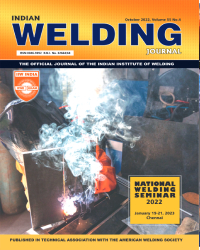Note on the Carbon Equivalent
Subscribe/Renew Journal
Measuring the hardness in the heat affected zone of welds is often considered as a convenient means to obtain easily information relative to the weldability of structural steels and or to the behaviour of weldments in service. A general association developed over the years between excessive harness levels in the weld zone and difficulties that were encountered during welding with cold cracking and/or during service with weldment performances.
User
Subscription
Login to verify subscription
Font Size
Information

Abstract Views: 352

PDF Views: 3



